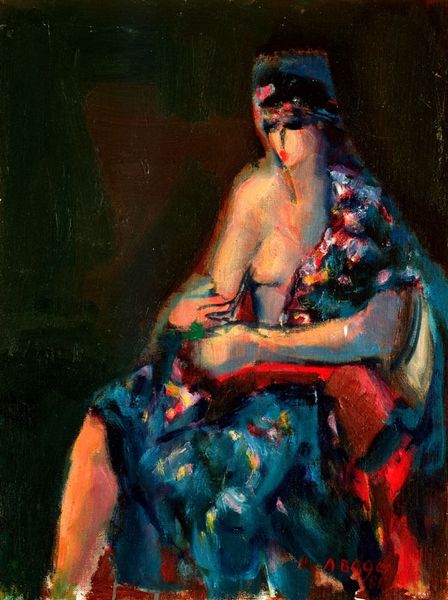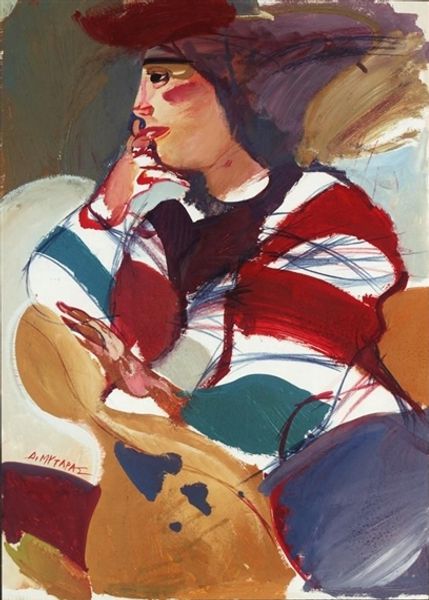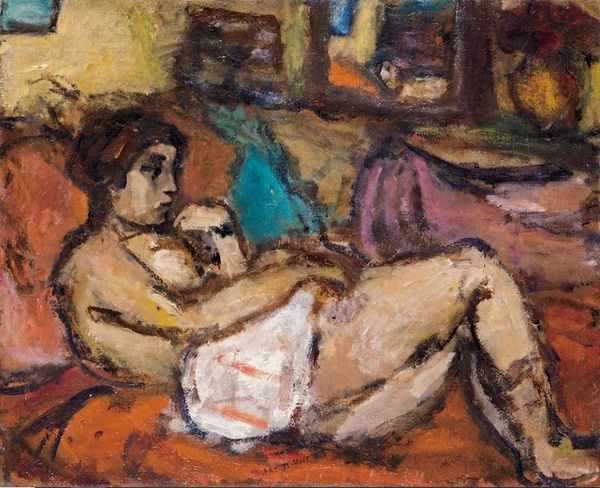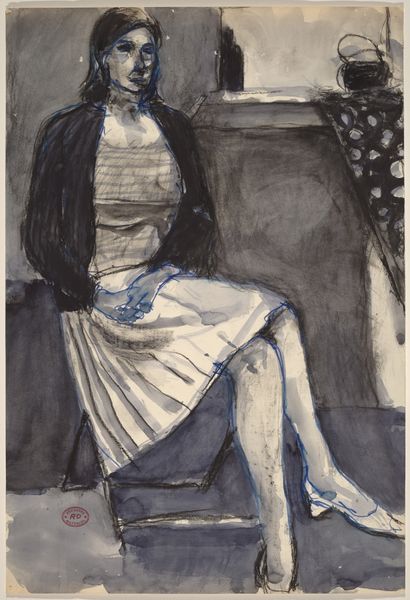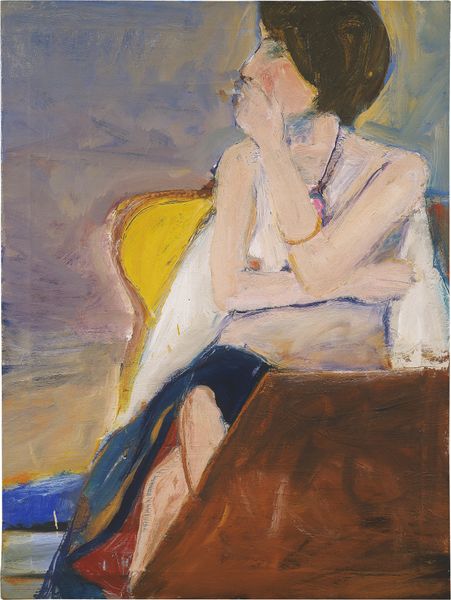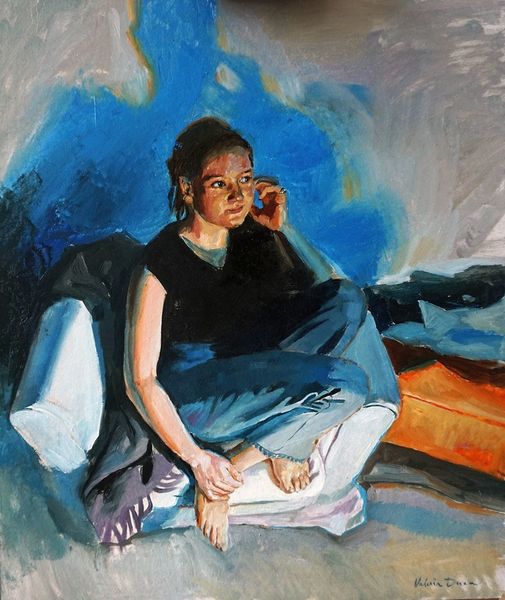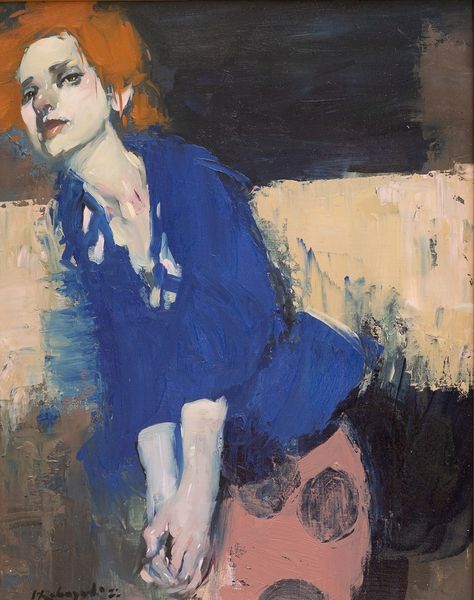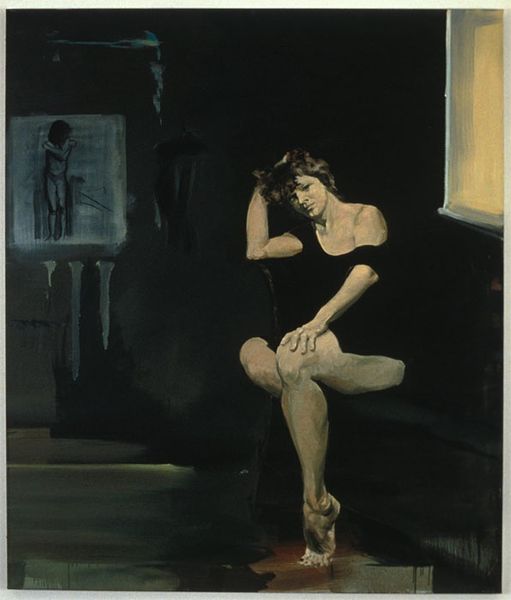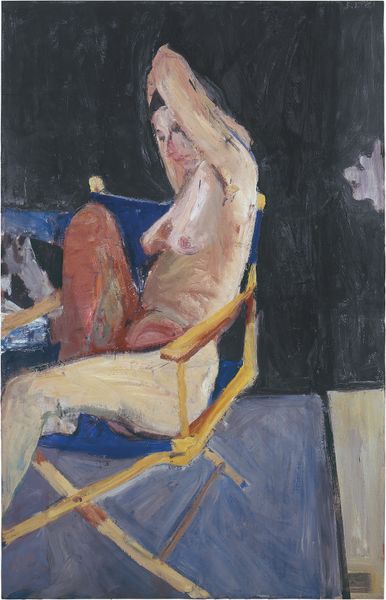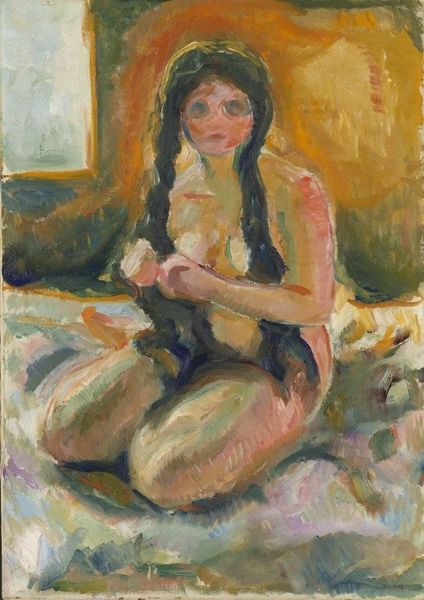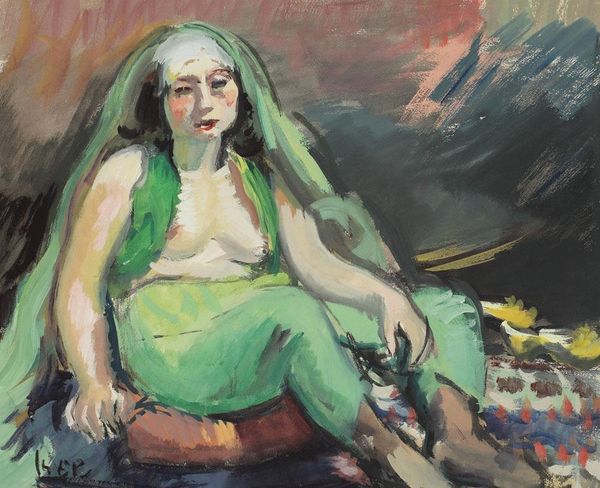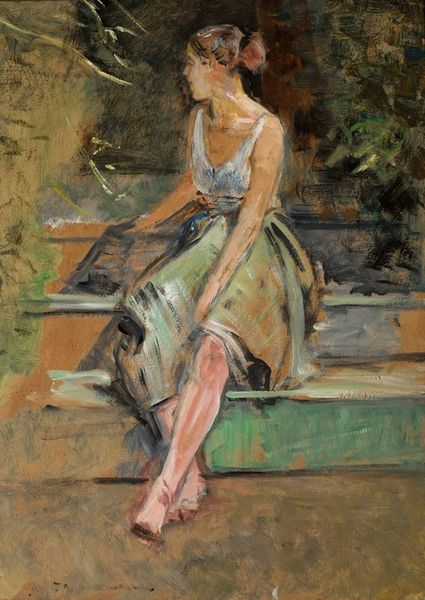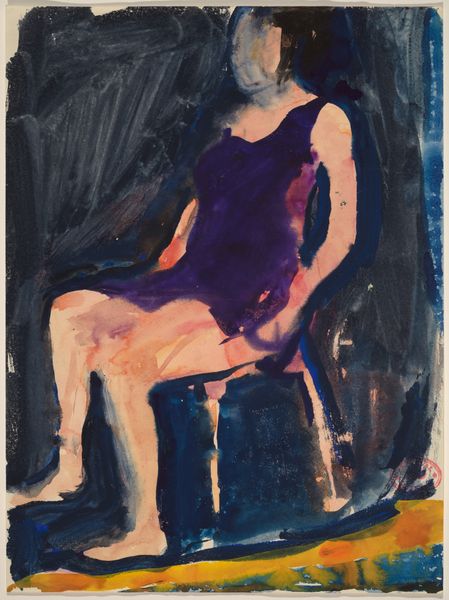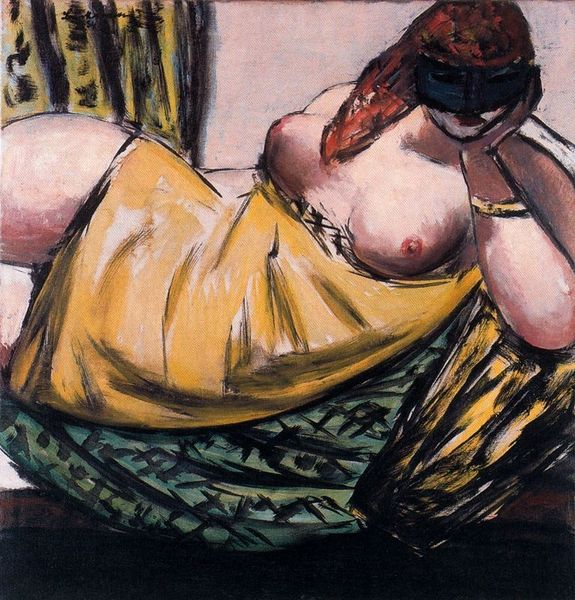
painting, oil-paint, impasto
#
portrait
#
painting
#
oil-paint
#
figuration
#
oil painting
#
impasto
#
intimism
#
realism
Copyright: Public domain
Editor: Here we have Robert Henri’s "The Lounge (Figure on a Couch)" from 1916, rendered with oil paint. I find the loose brushstrokes quite striking; the impasto adds texture, yet the scene itself feels very intimate and somewhat melancholy. What catches your eye in this work? Curator: What's immediately interesting is how Henri, known for his commitment to realism and urban scenes, engages with leisure and domestic space. We should consider the socio-economic context: this isn't some idyllic retreat, but a representation of the modern woman within the constraints and possibilities of early 20th-century life. Note the deliberate use of visible brushwork. Do you think this suggests something about the labor involved in representation itself, not just the depicted subject? Editor: That's a great point. The visible brushstrokes do disrupt any sense of illusion. It makes me think about the physical act of painting, of applying paint, more than just the image. Curator: Precisely. The materiality of the paint itself—the impasto—becomes significant. It pushes against the traditional idea of painting as mere window-dressing. Furthermore, how does Henri use color? The juxtaposition of the vibrant blues and oranges against the muted greens adds a certain tension. This affects our reading, yes? What does it evoke? Editor: There's a slight discord, a discomfort almost. The vibrancy feels forced, maybe a counterpoint to the figure's stillness, even sadness. It makes you think about the labor and time required to make the garment the model is wearing. The artist might be making a comment about commercial consumption. Curator: I agree. And how does the domestic interior, typically a space associated with feminine labor, get re-contextualized here through the means of its depiction? What assumptions are we making and are we seeing broken? The value and purpose of art must not come solely from high culture and aesthetics, but should reflect an economic or industrial lens. Editor: That definitely makes me reconsider the whole piece. It's not just a pretty portrait, but a commentary on labor, materials, and consumption during that time. Thanks! Curator: Exactly, thinking materially provides context and gives us a fuller scope. Always delve into what created and allowed the piece to happen.
Comments
No comments
Be the first to comment and join the conversation on the ultimate creative platform.
